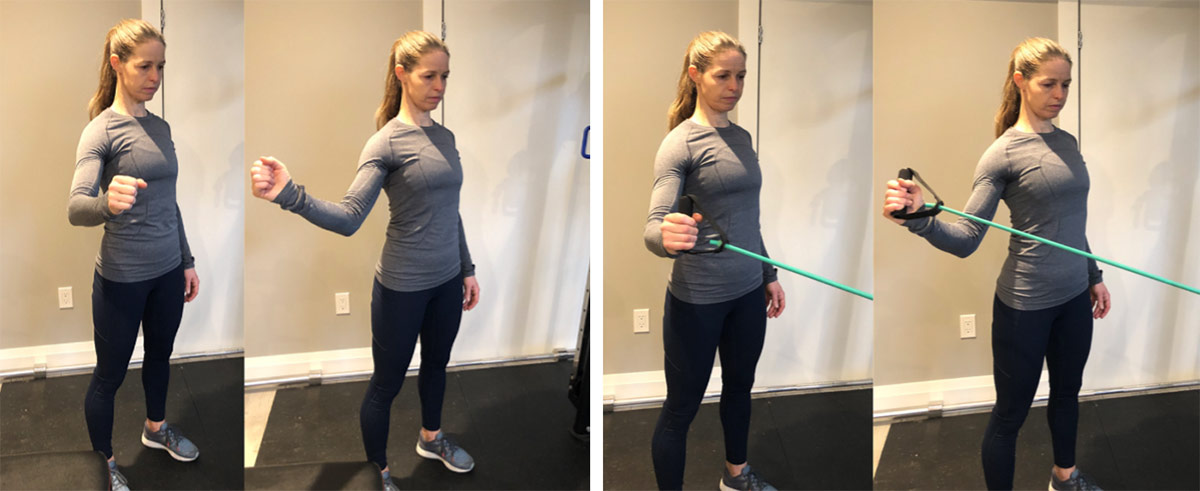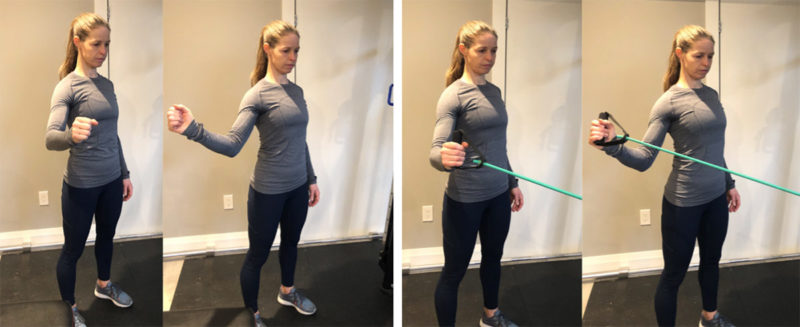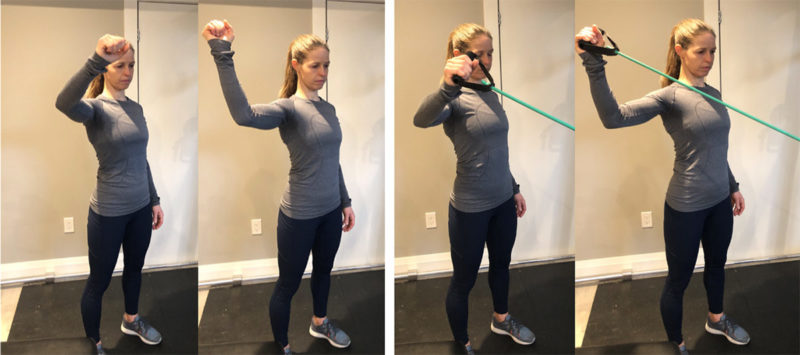One Strategy for Shoulder Pain
In a previous blog, we discussed an exercise that preferentially activates the supraspinatus and the infraspinatus while minimizing the activity of the deltoid. We learned that you cannot isolate a muscle so that it activates without any activity from any other muscle. Supraspinatus and infraspinatus are both commonly injured, so knowing about an exercise that really targets those muscles isn’t such a bad thing. However, we can also direct our rehabilitative exercises at movements and functions that are affected as opposed to focusing on the damaged tissue. Although imaging or clinical examination might suggest there is damage to a muscle or tendon, does it really matter if we try to target our rehabilitation toward that tissue? What if the exercise program directed at the damaged tissue doesn’t really improve a person’s day-to-day function or pain?
Addressing Shoulder Pain Injuries
Over the years I have modified how I address these shoulder injuries with patients. In the past, I would scrutinize the movement of the scapula looking for any asymmetry or “dyskinesis”. I would sometimes tape scapulae in position and prescribe exercises that preferentially target the scapular stabilizers in an effort to correct the biomechanics of the area. Although my efforts were honest and based on the best evidence at the time, the evidence has somewhat changed. We would now question whether there really is an ideal movement pattern, whether we can decipher it clinically and whether our rehabilitation strategies even change it. Perhaps a more sensible approach is to look at the movements that are painful for a person and go from there. With this approach, we don’t try to correct a patient’s movement to match a certain biomechanical ideal, but we look for what is important for that person.
This is a rather large topic. I cannot write a blog that summarizes how to tackle every shoulder injury. For today’s blog, I’m simply going to show you a movement that I find quite commonly aggravating for shoulder pain and a strategy that might help. It’s not directed at rehabilitating a particular tissue, but rather a movement that is often affected with various shoulder injuries. This doesn’t work for everyone. This isn’t appropriate for everyone. You need to consult with a suitable practitioner who can guide you to the most appropriate strategy for your injury.
A Simple Strategy
A very common movement direction that is difficult with a shoulder injury is abduction and external rotation. Combining these movements to various degrees mimics activities that are known to be difficult for painful shoulders. Examples are reaching in the back seat of the car, putting on a coat, putting a seatbelt on and preparing the shoulder for a back squat at the gym. Using no resistance, explore this movement to see if it produces a little bit of pain. The goal is to take the sting out of the pain, so we just move to the point of discomfort and hold the position for around 45 seconds. Similar to when you first get dressed in the morning, you feel the shirt on your back for a few minutes but then the sensation fades off. We’re trying to explore the same thing with this strategy. Repeating mindful “holds” just to the point of very mild pain can sometimes change the amount of pain over time. It’s important to not go too far and aggravate the area, which is where a practitioner can be helpful to guide you. With time, we hope that our tissues and our nervous system accept this movement and the end-range becomes less painful. We hope to achieve a greater range of movement before pain.
There is no “catch-all” strategy for shoulder pain and shoulder rehabilitation. This is simply a strategy that I’ve found works for many people. We can modify the specifics, but the concept is the same; find the movement that is difficult for you and very gradually explore it. See if you can improve the movement quality and reduce the pain associated with that movement. Sometimes we can move slightly into that point of pain and hold it, somewhat teaching the tissue and the nervous system that this isn’t a damaging position. Sometimes this can help to get the full movement back.
A Practical Example
A practical example of how we can use a movement function to direct our rehabilitation is reaching into the arm of your coat. Start your rehabilitation with a small movement that mimics that direction (external rotation at neutral) and hold it. Then once that becomes less painful, continue expanding the range of movement so that it mimics the full movement of putting on your coat. If that becomes painless, then try putting on your coat! If there is no pain with putting on your coat, consider doing that same movement with resistance (as pictured below) so that the tissues are more capable in the future and the chance of injury is perhaps decreased.
If you’ve been following our blog over the years you can probably notice that we’re getting away from ideal movement patterns and exercises. There often is not a lot of research to support these ideal movements with exercise. It’s different for everyone. There really aren’t any bad movements nor are there any bad exercises. Most important is the movement that is disrupted for that person and how do we get it back safely and efficiently. Rehabilitation can be as simple as looking for the dysfunctional movement for that person, break it down to its components and then build it back up. We try not to run away from our painful movements. Instead, we carefully explore them and get them back!
If you’re experiencing shoulder pain, please reach out to us. We can help.
By Dr. Kevin McIntyre B.Kin., DC










